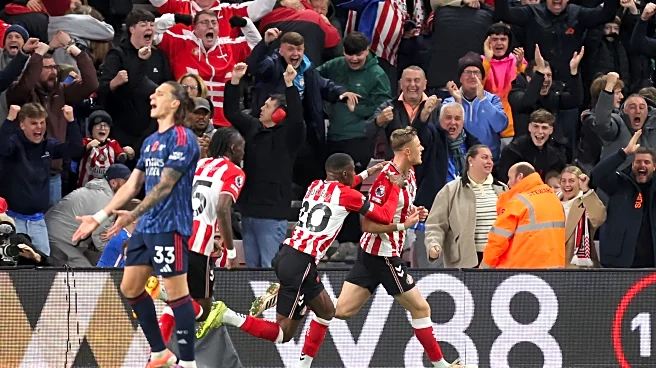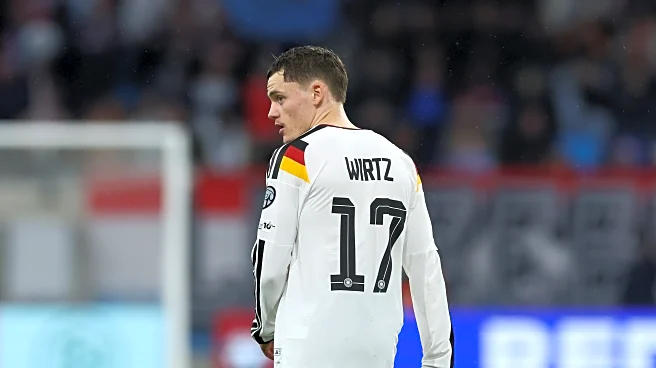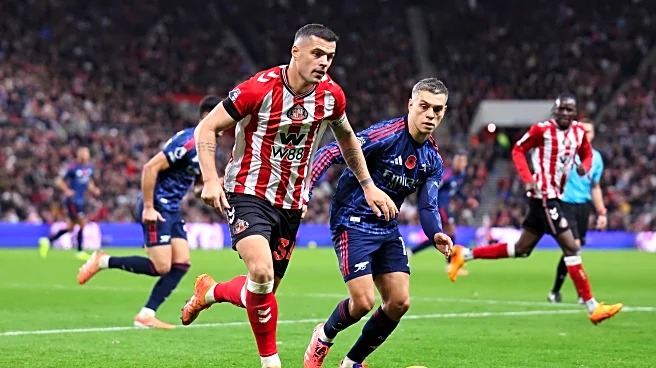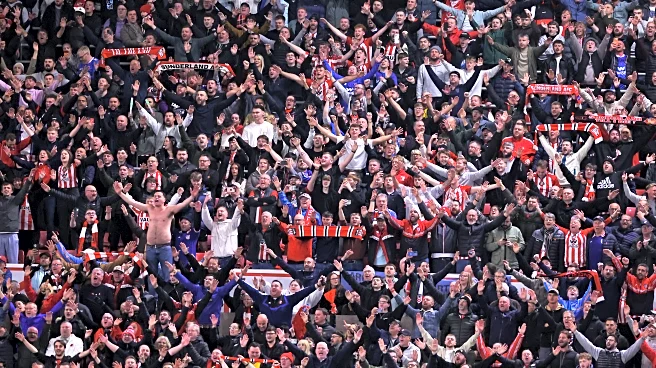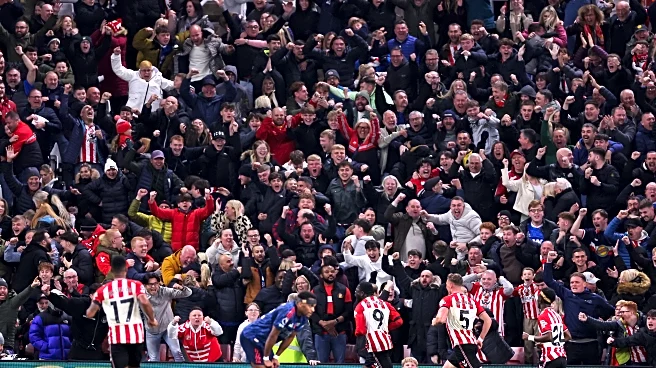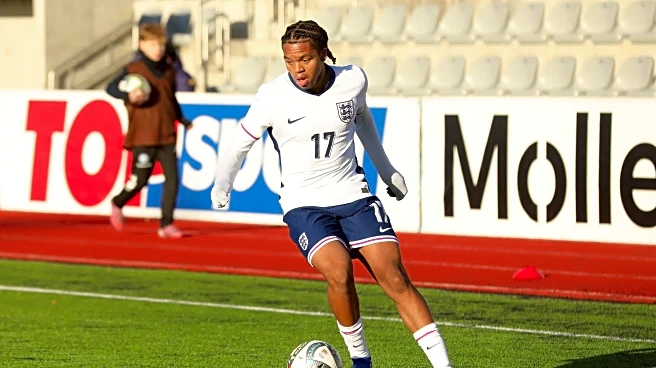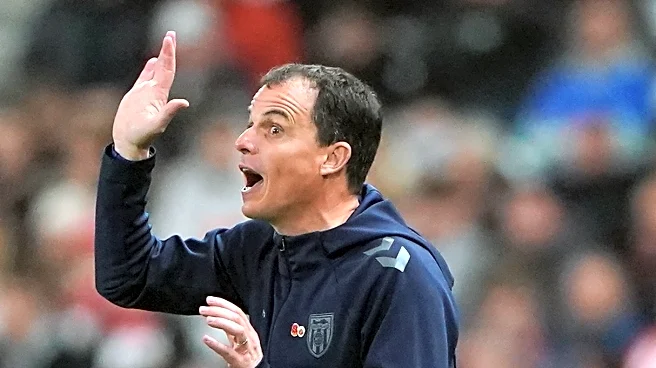Much of the praise for Sunderland’s dream start back to life in the Premier League has been rightfully directed towards defensive performance. From Robin Roefs’ impressive command of his area in just his second professional season, to Dan Ballard’s willingness to launch himself through a brick wall for a header, to the class that the likes of Nordi Mukiele and Omar Alderete have provided, pundits across platforms have marvelled at a defensive start topped only by title-favourites Arsenal.
Yet, this
praise has consistently come with the same caveat, that being the disbelief that Sunderland are performing this well despite, in the view of these commentators, having “the worst defensive record of any of the promoted three sides”. This predictably leads to the subsequent point being made that their summer signings are the only reason for said success.
On the surface, these points are both valid. Sunderland did have a significantly higher expected goals against (xGA) than the other two promoted sides, among the most commonplace defensive metrics. There is also no doubt that the signings made this summer have been immensely important to the Black Cats’ success (a necessity for any promoted side, regardless of circumstance).
However, this simple analysis belies a lack of understanding of how Sunderland played last season in the Championship, as well as the intentional foundations that have ensured a more successful transition to the Premier League than seen in recent times, especially when compared to their promotion rivals.

Leeds United, by most metrics, displayed a traditional style of dominance in winning the Championship. They scored 24 more goals than anyone else in the league, doing so with the highest possession percentage at 61.6%. They also had 120 more touches in the opponent’s box than their closest competitors. Their defensive excellence was thus built not on consistent defending, but on limiting opponents’ chances through outstanding in-possession play. This is reflected by them ranking 2nd-least in the league in tackles made, 6th-bottom in interceptions made, and dead last in clearances made. While an admirable style of play, it is perhaps one less likely to translate against Pep Guardiola’s Manchester City than Alex Neil’s Millwall, and speaks to manager Daniel Farke’s lack of prior Premier League success at Norwich despite his dominance in the second tier.
Burnley, on the other hand, were built on the back of an all-time great campaign from goalkeeper James Trafford. The England youth prospect kept a league record 30 clean sheets, saving 85% of shots he faced, over 7% better than his closest competitor in net. This level of performance may or may not have been sustainable in the Premier League, but Burnley chose not to take any risks and sold him this summer to Manchester City as backup for Gianluigi Donnarumma, replacing him with a proven top-flight veteran in Newcastle alum Martin Dúbravka.
When Trafford wasn’t saving shots, Scott Parker’s Clarets relied on a pair of talented centre-halves in CJ Egan-Riley (who has since gotten a move to Marseille) and Maxime Estève, respectively ranked 2nd and 5th among Championship centre-halves by FotMob. This again showcases individual player dominance as the heart of their defensive solidity. Outside of these players, Burnley, like Leeds, were built on a possession-based approach to dominate games, with their 56.9% ranking 4th highest in the league. This style of play led to them registering in the bottom 5 in tackles, interceptions, and clearances.

Both of these teams’ recruitment in at least one key regard also valued Football League veterans over Premier League potential. Leeds’ leading scorer was Joël Piroe, a player who had netted at least a dozen goals in the 3 prior Championship campaigns between Swansea and Leeds, without generating much noteworthy top-flight transfer interest. He has played a total of 181 Premier League minutes this season. Burnley’s top scorer was long-time servant Josh Brownhill, a veteran of 7 Championship campaigns spent between various squads. He is now plying his trade in the Saudi Pro League.
All of this is to say, Leeds and Burnley presented a style of football, both on the pitch and in recruitment, that was geared towards dominance in the second tier. Their performance was not indicative of the reality they would be up against in the Premier League, in terms of the amount of high-level defending that is required, the lack of possession they would control, and the profile of players that are viable in a higher division. They emphasised winning at the lower tier above establishing a playing style that contained the survival elements necessary to compete in the Premier League.
This brings us back to the Black Cats. On average, Sunderland had the ball for less than half the game in the Championship at 49.1%, below the likes of Hull and Watford. Sunderland ranked closer to the middle of the pack in terms of tackles won (16th), interceptions won (14th), and clearances made (17th). Notably, this ranks above both Leeds and Burnley in all three categories. So, while not exactly under siege all season, Sunderland experienced a reality closer to the type of defending Premier League survival demands: putting in graft over dominating games.

This forward-thinking mindset can also be seen with the recruitment of Sunderland’s Championship-leading scorer Wilson Isidor, who had never played in England before he arrived from Zenit St Petersburg. While solid in the second tier, his relatively seamless transition to the top flight compared to other top scorers is unsurprising for supporters, given that someone who specialises in defending from the front and getting in behind high lines is far likelier to have success in the Premier League than against Preston.
In this way, Sunderland were systematically preparing for life in the Premier League while still in the Championship. Whilst Daniel Farke and Scott Parker spent the summer reinventing their systems to prepare for a dramatically new type of challenge, Régis Le Bris merely had to tweak his formations while instilling the already existing mentality in his new, high-quality recruits.
Solid defending, physicality in both boxes, and rapid counter-attacks may be the hallmarks of the Sunderland team that has taken the top-flight by storm. However, for supporters who watched Trai Hume’s crunching tackle on Ben Brereton Díaz at Wembley, Dan Ballard’s heroic playoff display against Coventry, and goals such as the one Wilson Isidor and Enzo Le Fée combined for at Middlesbrough, nothing looks that different. They are all textbook examples of the style of play that Sunderland established last season, which has directly carried over into this campaign, creating continuity in the club despite the changes in personnel with the summer recruitment.
So, the next time a pundit marvels at Sunderland’s defensive solidity despite having the worst xGA against of the promoted sides, or says that they bought their way to survival with their signings, look towards the style of play that the Black Cats utilised in the second tier. It may have been less traditionally dominant than Leeds, and it may have employed less individual brilliance than Burnley, but, as this season’s results are proving, it has created a smoother transition to the Premier League than most.


